Curing HIV—How Far Have We Come?
Updated March 13, 2025
It’s a sure sign of cure research progress that today it can be hard to keep track of the various cases of HIV having been cured or controlled in the absence of antiretroviral therapy (ART). The cases that tend to make headlines are those resulting from high-risk stem cell transplants, which are only an option for a very small number of people with both HIV and certain blood cancers. More numerous are those cases where virus still remains but is somehow kept in check by the immune system. While we’re still some distance from having a cure that’s easy to administer, affordable and, above all, widely available, researchers are learning from all of these cases.
So today, we’re curing some people, some of the time, the first step toward curing most people, most of the time. To help you make sense of it all, we’ve put together this summary of cure, or treatment-free control, cases to date, and we’ll add to it as others come to light.
Stem cell transplantation
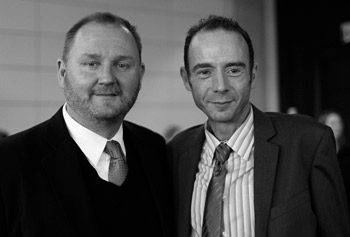
Berlin patient – The first known case of HIV cure was Timothy Ray Brown, who had been living with HIV for over a decade when he developed acute myeloid leukemia. He received chemotherapy, total body irradiation, and two stem cell transplants. Each transplant came from the same donor, who had the CCR5 delta32 genetic mutation, which renders cells almost impervious to HIV infection. The case was published in 2009 and was subject to intense scrutiny before scientists agreed he was likely cured. Although he remained free of any signs of HIV infection, Timothy passed away in September 2020 following a relapse of his leukemia.
City of Hope patient – At the AIDS 2022 conference in Montreal in July, researchers reported that a yet-to-be-named man living with HIV had been treated for acute myeloid leukemia using stem cells from a donor with the CCR5 delta32 genetic mutation. The man had stopped taking antiretroviral therapy (ART) for 14 months with no sign of rebounding HIV. He is the oldest person to date to receive a stem cell transplant that appears to have resulted in an HIV cure, and had been living with HIV the longest—since 1988. About six months after AIDS 2022 he disclosed his identity—Paul Edmonds—in order to share his personal story.
Düsseldorf patient – Researchers confirmed in February 2023 that a 53-year-old man in Germany referred to as the Düsseldorf patient—now known to be Marc Franke—has been cured of HIV. Like the London and Geneva patients, the Düsseldorf patient is a member of amfAR’s ICISTEM cohort of people living with HIV and cancer who received stem cell transplants. His acute myeloid leukemia was treated with a CCR5 delta32 stem cell transplant in 2013. A few months after the transplant he experienced a relapse of his leukemia, which was treated successfully without additional stem cell transplantation. His case was reported at the same conference as the London patient case. Despite discontinuing ART in 2018, again under closely monitored conditions, he continues to show no signs of HIV infection.
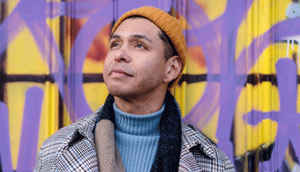
(Photo by Andrew Testa/The New York Times)
London patient – More than 10 years after Timothy Brown’s cure, in 2019 Adam Castillejo was reported likely cured following a CCR5 delta32 stem cell transplant to treat his Hodgkin lymphoma. He received a reduced intensity preparatory chemotherapy but no irradiation prior to his transplant. He stopped taking ART under close supervision in 2017 and remains HIV-free.
New York patient – In February 2022, researchers reported that a woman living with HIV in New York had been treated for her acute myeloid leukemia using CCR5 delta32 stem cells from cord blood combined with adult stem cells from a relative, the first such haplo-cord blood transplant leading to a potential HIV cure. At the time of the report, the woman had stopped ART for 14 months with no sign of HIV infection. The case was subsequently reported in the journal Cell on March 16, 2023.
Geneva patient – In July 2023, news broke at the International AIDS Society Conference on HIV Science (IAS 2023) that a man in his early fifties may have been cured of HIV, also through a stem cell transplant. Notably, the transplant used “wild-type” donor cells, which are not near-impervious to HIV infection like the donor cells with the CCR5-delta32 genetic mutation used in the previous cases. After 20 months, the man remains undetectable and it remains to be seen whether he has in fact been cured.
Second Berlin patient – Researchers at AIDS 2024 announced that an adult German male born in 1964, who wishes to remain anonymous, likely joins the six other individuals listed above who have been cured by a stem cell transplant. The second Berlin Patient provides new evidence that the CCR5 delta32 gene mutation might not be the only path to a cure. The patient has been in sustained HIV remission for five and a half years without ART after a stem cell transplant of donor cells with only a single “heterozygous” gene mutation for CCR5. In this case, the donor cells were fully susceptible to HIV infection, but the research team could find no residue of HIV after years of monitoring. Researchers are now investigating what healing mechanisms may be at work in this case.
French patient – At the HIV Drug Therapy Glasgow conference in November 2024, researchers presented the eighth case of a possible HIV cure—a woman in her mid-fifties living in France who had been diagnosed with HIV in 1999. Referred to as the “French Patient” as her name has not yet been disclosed, she first achieved an undetectable viral load in 2010. In July 2020, the woman received a stem cell transplant to treat acute myeloid leukemia with donor cells with a double CCR5-delta32 mutation. Months after the transplant, researchers were unable to find HIV RNA or DNA in circulating CD4 cells or blood plasma. Once her immunity rebounded, she elected to stop ART in October 2023 and has remained HIV-free. Researchers will continue to monitor her to determine if she is cured.
Chicago patient — Researchers at the March 2025 Conference on Retroviruses and Opportunistic Infections (CROI) shared study results detailing the Chicago Patient, a 67-year-old man who underwent a stem cell transplant for acute myeloid leukemia with HIV-resistant donor cells. As no HIV was detected in circulating cells in the blood or bone marrow after more than a year of monitoring post-transplant, ART was interrupted to determine whether the virus had been successfully eradicated. When treatment was stopped, however, HIV that had been dormant in the reservoir rebounded. Eager to ascertain if a cure was still possible, the researchers restarted ART and stopped treatment after two years. This time, the man has been able to achieve HIV remission for 10 months and counting, making this the first known case of sustained treatment-free HIV remission after viral rebound post-transplant.
Oslo patient – Also at CROI 2025, researchers presented the case of the Oslo Patient, a 58-year-old man who had been living with HIV for 14 years. Diagnosed with a blood disorder called myelodysplastic syndrome, he received a stem cell transplant with HIV-resistant cells donated by his brother. The transplant recipient, whose cells were not HIV-resistant, stopped treatment 24 months after the procedure and has been in remission for 48 months—the first case of remission using a sibling’s donor cells. The study considered various possible mechanisms that led to the remission. For example, the individual developed graft-versus-host disease (GvHD), a significant complication post-transplant in which a donor’s immune cells attack a recipient’s cells, and was treated with immunosuppressive drugs. One of these drugs and GvHD may reduce the HIV reservoir.
Exceptional elite control
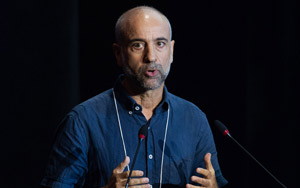
At the AIDS 2022 conference, Dr. Javier Martinez-Picado discussed the phenomenon of exceptional elite control—people who, without the use of ART, control HIV viral replication and do not experience immune dysfunction. There is no disease progression and they have extraordinarily low burdens of HIV, which can be detected only using specialized laboratory tests. They may experience a loss of anti-HIV antibodies over time, and have relatively weak immune responses against HIV, both signs that the body is no longer fighting HIV infection. Six such individuals have been followed for more than 30 years, and Dr. Martinez-Picado proposed that they may be considered a good model for an HIV cure.
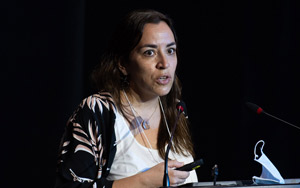
Esperanza patient – Following the case of Loreen Willenberg (see below), a second such case was announced in 2022 in a woman named after her hometown in Argentina. She was diagnosed with HIV in 2013 and has taken antiretroviral therapy only for brief periods during two pregnancies. Nonetheless, researchers including Drs. Xu Yu and Mathias Lichterfeld (both amfAR grantees), as well as collaborators in Argentina, have been unable to find intact or replication-competent virus in her.
San Francisco patient – Loreen Willenberg was diagnosed with HIV in 1992. Unlike almost all people living with HIV, she has never needed to take antiretroviral therapy to control her HIV infection. In 2020, Drs. Yu and Lichterfeld announced that they were unable to find any intact HIV in her body despite searching in more than one billion cells, raising the intriguing possibility that her immune system not only controls the virus but may have, for all intents and purposes, eliminated it.
Post-treatment control (PTC)
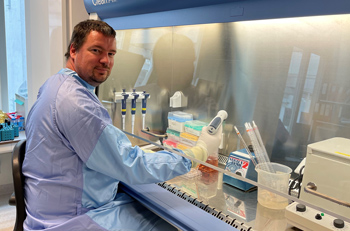
Dutch study – Researchers in the Netherlands have shared study results detailing a new case of post-treatment control of HIV. Diagnosed in 1998 when he was 49, the man started ART, suppressed his viral load to undetectable levels seven months later, and eventually discontinued all regimens. He remained engaged in care and was checked by physicians on a regular basis. Except for one small spike of his viral load seven months after he stopped ART, he has remained undetectable (below 200 copies) for close to two decades post-treatment. The virus is still present and intact in his cells and blood. Comprehensive genetic and immunological analyses by researchers, including past amfAR grantee Dr. Jori Symons of University Medical Center Utrecht, the Netherlands, suggest why the man has been able to achieve post-treatment control—strong CD8 responses and a virus that seems slow to replicate possibly due to a mutation.
Barcelona patient – Researchers from Barcelona reported at AIDS 2022 that a woman who had participated in a clinical trial of several immune-modifying interventions that variously suppress and stimulate immune function had stopped taking ART with no rebound of HIV for 15 years. She was diagnosed with HIV early during infection and took ART for several months in combination with the immune treatments. Her HIV can still be detected in laboratory tests, but her immune system appears to be keeping it under control without the use of ART. Several measures of her reservoir indicate a decline over time in the amount of persistent virus in her body.
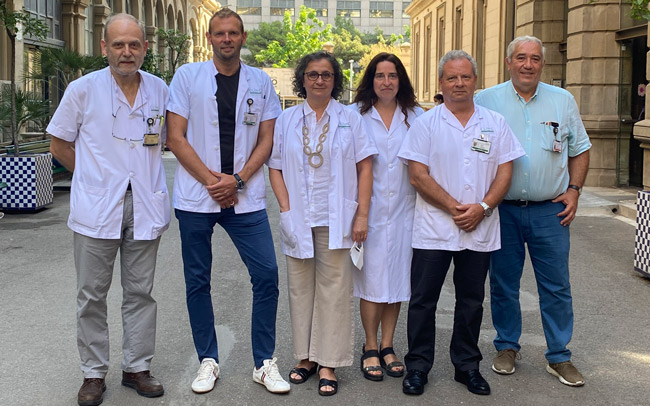
CHAMP study – The Control of HIV After Antiretroviral Medication Pause (CHAMP) study identified 67 post-treatment controllers from across 14 clinical studies, of whom about 20% maintained control of their virus without ART for more than 5 years. Other academic centers have also identified some of these rare individuals, and studies are ongoing to find mechanisms that may mediate ART-free control.
VISCONTI cohort – A study published in 2013 described 14 individuals who had started ART early during HIV infection and stayed on treatment for 1–8 years. These individuals subsequently maintained control of the virus without treatment, either at low levels or undetectable, for a median of around 7.5 years at the time of the report.
Early treatment
Mississippi child – A child born in the U.S. to a mother living with HIV received ART for the first 18 months of her life, and was then lost to follow-up, during which time she did not take ART. When the child re-entered medical care five months later, doctors were surprised to find no HIV in her viral load tests. Researchers carefully monitored her for several months and believed she might have cleared her HIV infection, but the virus rebounded just over two years after stopping ART and she restarted medication.
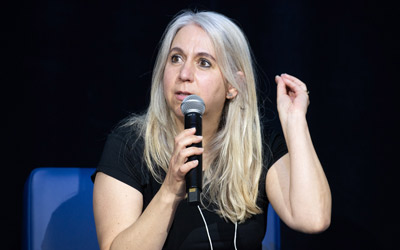
South African child – An update was provided at AIDS 2022 on an infant who was born HIV-positive and was enrolled in an NIH clinical trial testing the effect on the reservoir of early ART. He started ART soon after birth and was treated for 40 weeks, during which time his viral load decreased to undetectable after around 40 days of treatment. ART was then stopped and the child has maintained undetectable HIV for more than 13 years. Researchers are unable to find any intact HIV in his body. He was the only one of 227 infants enrolled in the study to achieve this outcome.
Five South African male infants—At IAS 2023, researchers presented the cases of five male infants in South Africa who were treated for their HIV infection in the womb and then achieved and sustained undetectable viral loads despite not adhering consistently to ART after they were born, suggesting they can control HIV without antiretrovirals.
Within the longitudinal study, which started in 2015, researchers also found evidence that sex differences in early-life innate immune response may be associated with post-treatment control, as only boys rather than girls, who made up 60% of the cohort, became undetectable.
IMPAACT P1115 study: At the 2024 Conference on Retroviruses and Opportunistic Infections (CROI), researchers presented results of a new study showing that early treatment may reduce the HIV reservoir and lay the groundwork for a functional cure, particularly for children.
Researchers monitored 54 infants who acquired HIV in the womb and initiated ART within 48 hours after birth. Among six children (median age: 5.5 years) who met eligibility criteria and underwent a closely monitored treatment interruption, two experienced viral rebound quickly but four have been able to sustain remission of HIV for at least a year.
Moving Forward
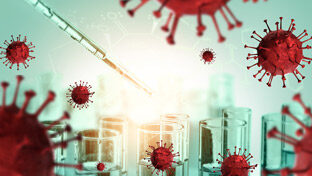
Figuring out how to fine-tune or supercharge the immune system to unleash its full potential could hold the key to inducing treatment-free control of HIV. Similarly, CCR5, the portal that enables HIV to enter and infect cells and has been central to the stem cell transplantation cures to date, remains a prime target for cure researchers.
amfAR continues to support studies that build on all of these cases and attack HIV, and the persistent HIV reservoir, from every possible angle. Additional studies are testing cell and gene therapy, immunotherapy and other approaches to curing HIV. We will continue to pursue every possible avenue until we have a cure, or cures, that can be made available to all 40 million people living with HIV.
Share This:
